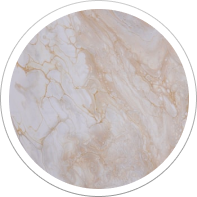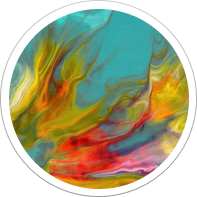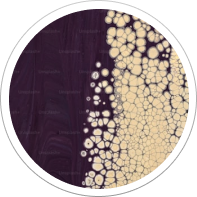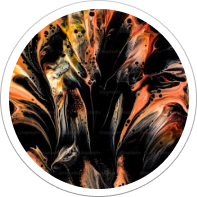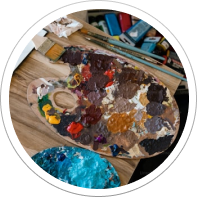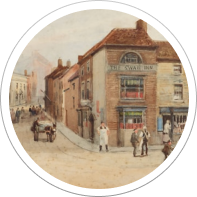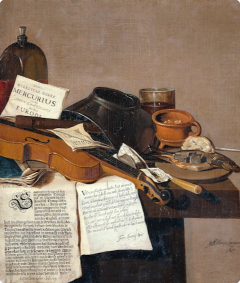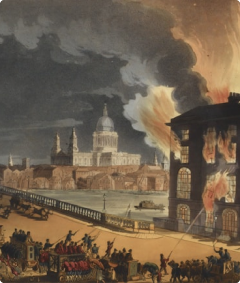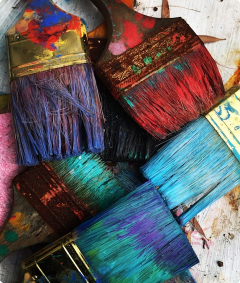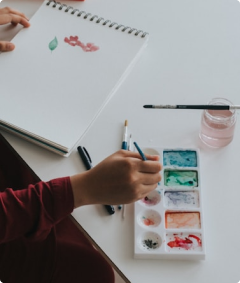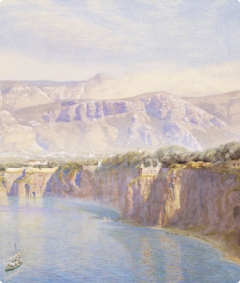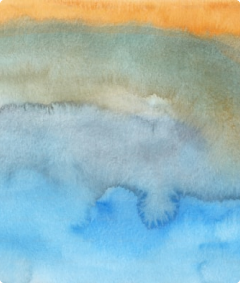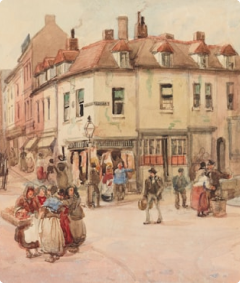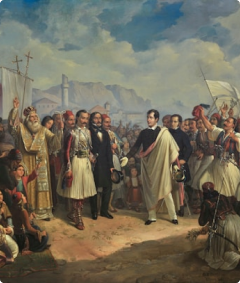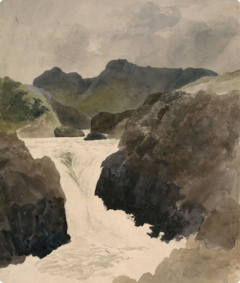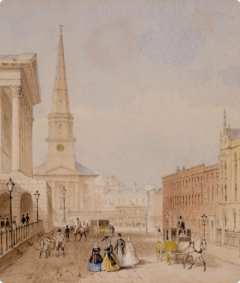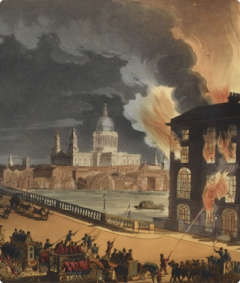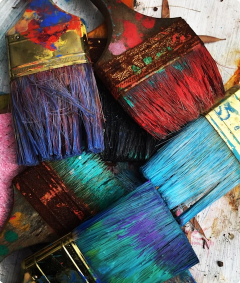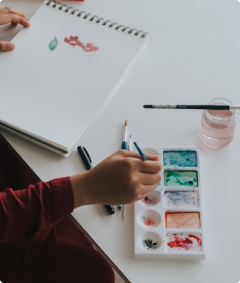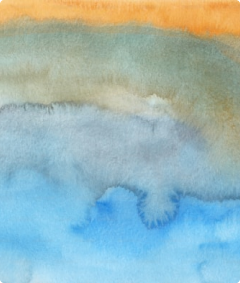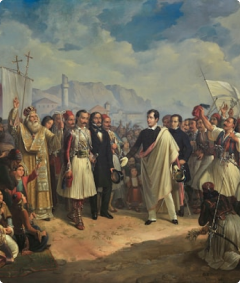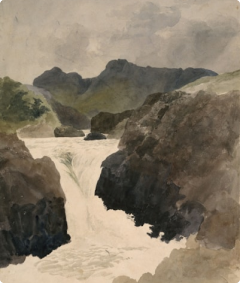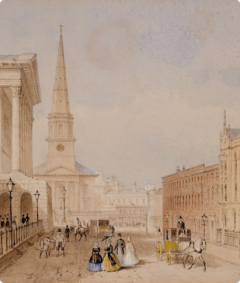
Top Seller
Canvas Prints & Photo Tiles, Wall Art from Jodello
Transform your space with Jodello’s canvas prints, photo tiles, and custom wall art. Turn memories and designs into stunning decor that reflects your unique style.
Get Started
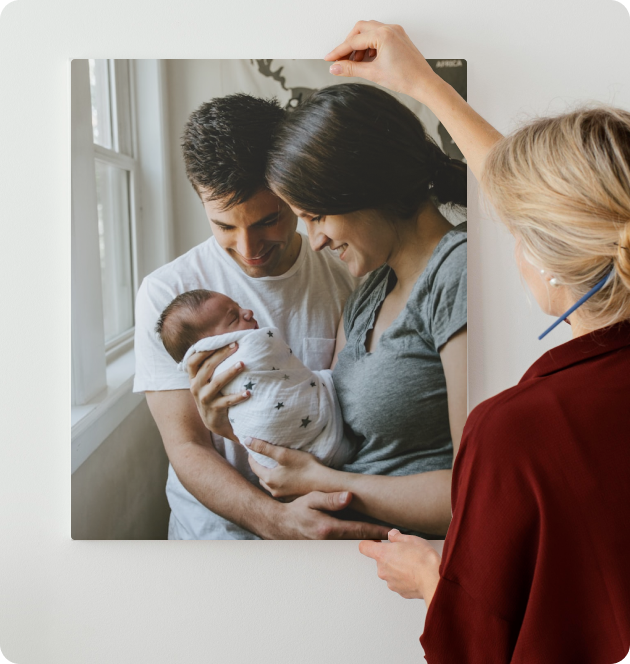






How It Works:
Transform your space with Jodello’s canvas prints, photo tiles, and custom wall art.

1. Add Photos
Upload your favorite moments.

2. We Deliver
Get your custom prints fast.

3. You Stick
Peel, stick, and transform your walls effortlessly.

Featured Categories
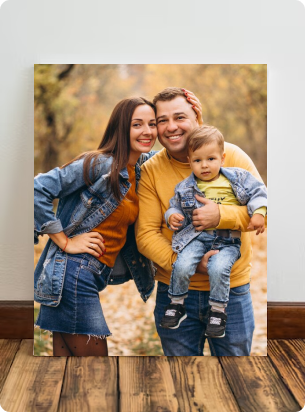
Your Cherished Moments, Beautifully Displayed
Transform your space with top-quality, customizable canvas prints. From cherished moments to stunning artwork, Jodello offers a seamless way to craft beautiful pieces that showcase your unique taste.
Get Started
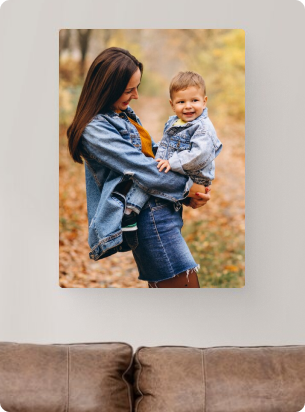
Why You'll Love Jodello

Seamless Installation
Easy-to-mount prints, no tools needed

No Damage, No Hassle
Sticks securely, removes cleanly

Endlessly Customizable
Designs that fit your style effortlessly
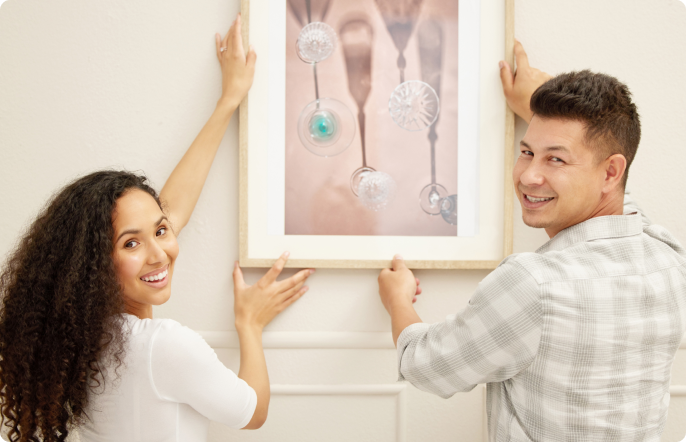
Customer Testimonials
Discover the conversations happening around our brand and see what our customers are saying about their experiences with us.
"I recently purchased a stunning canvas from Jodello, and I couldn't be happier with my choice! The vibrant colors and exquisite detail have truly transformed my living room. “


Liam Carter
"I recently purchased a stunning canvas from Jodello, and I couldn't be happier with my choice! The vibrant colors and exquisite detail have truly transformed my living room. “


Liam Carter
"I recently purchased a stunning canvas from Jodello, and I couldn't be happier with my choice! The vibrant colors and exquisite detail have truly transformed my living room. “


Liam Carter
FAQs
Easy-to-mount prints, no tools needed
Easy-to-mount prints, no tools needed
Easy-to-mount prints, no tools needed
Easy-to-mount prints, no tools needed
Easy-to-mount prints, no tools needed
Easy-to-mount prints, no tools needed
Easy-to-mount prints, no tools needed
Easy-to-mount prints, no tools needed
Transform Your Living Space with Handcrafted Personalised Canvas Prints & Wall Art
Creating personalized wall art represents one of the most rewarding and expressive ways to transform any living space into a reflection of your unique personality and aesthetic preferences. This comprehensive exploration delves into the multifaceted world of custom art creation, offering insights into traditional crafting approaches, contemporary digital methodologies, and innovative hybrid solutions that blend conventional artistry with modern printing capabilities.
The journey of personalized wall art creation begins with understanding the fundamental principles that distinguish exceptional custom pieces from ordinary decorative elements. When embarking on this creative endeavor, consider the intricate relationship between color theory, spatial dynamics, and personal symbolism that will ultimately define the emotional resonance of your finished artwork. The most compelling personalized pieces often emerge from a careful balance of spontaneous creativity and deliberate planning, allowing for serendipitous discoveries while maintaining cohesive visual harmony throughout the composition.
Contemporary interior design increasingly emphasizes the importance of authentic, personally meaningful decorative elements that speak to the inhabitant's individual story and cultural background. Personalized wall art serves as a powerful medium for self-expression, enabling creators to incorporate meaningful imagery, cherished memories, and symbolic representations that transcend the limitations of mass-produced decorative accessories. This artistic pursuit offers unlimited possibilities for creative exploration, from abstract expressionist interpretations to photorealistic renderings that capture specific moments in time.
The therapeutic benefits of engaging in personalized art creation extend far beyond the aesthetic outcomes, providing opportunities for mindfulness, stress reduction, and creative problem-solving that contribute to overall mental wellbeing. Many practitioners discover that the meditative aspects of cutting, arranging, and adhering materials create a sense of focused tranquility that serves as a welcome respite from the demands of contemporary life. The tactile experience of working with various textures, from smooth canvas surfaces to textured paper elements, engages multiple sensory pathways and promotes a deeper connection to the creative process.
Understanding the historical context of personalized art creation reveals fascinating connections to traditional folk art practices, indigenous cultural expressions, and avant-garde artistic movements that challenged conventional boundaries between fine art and decorative crafts. Throughout history, individuals have sought to personalize their living environments through handcrafted elements that reflect their values, experiences, and aspirations. This enduring human impulse toward creative expression continues to evolve with contemporary materials and methodologies while maintaining its essential connection to authentic self-representation.
The psychological impact of displaying personalized wall art in residential and professional environments cannot be overstated, as these custom pieces often serve as powerful anchors for positive memories, sources of daily inspiration, and conversation starters that facilitate meaningful social connections. Research in environmental psychology suggests that personalized decorative elements contribute significantly to feelings of ownership, comfort, and identity within a space, ultimately enhancing overall quality of life and emotional wellbeing for inhabitants and visitors alike.
Essential Materials and Tools for Exceptional Results
Selecting appropriate materials forms the foundation of any successful personalized wall art project, requiring careful consideration of durability, visual appeal, and compatibility with chosen creative techniques. The canvas selection process involves evaluating factors such as weave density, primer quality, and dimensional stability to ensure optimal results that will maintain their beauty and structural integrity over extended periods. Professional-grade canvases offer superior archival qualities compared to budget alternatives, providing enhanced color retention and resistance to environmental factors that could compromise the longevity of your artistic investment.
Acrylic paint selection demands attention to pigment quality, consistency, and color permanence ratings, as these factors directly influence the vibrancy and durability of your finished piece. Artist-quality acrylics contain higher concentrations of pure pigments suspended in premium binders, resulting in richer color saturation and improved lightfastness compared to student-grade alternatives. Consider investing in a carefully curated palette of primary and secondary colors that can be mixed to achieve virtually any hue imaginable, while also including specialized metallics, iridescents, and texture mediums that expand creative possibilities.
Paper selection for collage elements requires balancing aesthetic considerations with practical factors such as weight, texture, and adhesive compatibility. Handmade papers, vintage book pages, decorative scrapbooking materials, and specialty art papers each offer unique visual characteristics that contribute distinct textural qualities to the overall composition. Experimenting with papers of varying opacity levels creates opportunities for layering effects that add depth and visual complexity to the finished piece.
Adhesive selection plays a crucial role in determining both the immediate workability and long-term stability of collage elements within your personalized wall art composition. Hot glue guns provide immediate bonding strength and precise placement control, making them ideal for three-dimensional elements and irregular shapes that require secure attachment. However, consider the potential for thermal damage to delicate papers and the visible texture that hot glue can create when working with thin materials.
Brush selection encompasses a wide range of specialized tools designed for specific painting techniques and effects. Foam brushes excel at creating smooth, even coverage over large areas while minimizing visible brush strokes, making them particularly valuable for background preparation and base coat application. Natural bristle brushes offer superior paint-holding capacity and blending capabilities for more nuanced color work, while synthetic alternatives provide durability and easy cleanup when working with acrylic mediums.
Protective finishing materials, including various formulations of polymer mediums and varnishes, serve multiple functions in preserving and enhancing the visual qualities of completed artwork. These specialized coatings provide protection against ultraviolet radiation, moisture, and atmospheric pollutants while offering options for surface texture ranging from high-gloss reflectivity to completely matte finishes. Understanding the application properties and drying characteristics of different protective coatings enables informed decisions about which products best serve the specific requirements of individual projects.
Additional tools that enhance the creative process include precision cutting implements, measuring devices, texture-creating instruments, and specialized applicators that expand the range of achievable effects. Quality scissors designed for paper crafting maintain sharp edges longer and provide cleaner cuts than general-purpose alternatives, while craft knives offer precision control for intricate detail work and complex shapes that would be difficult to achieve with scissors alone.
Fundamental Preparation Steps for Professional Results
Workspace preparation establishes the foundation for successful personalized wall art creation, requiring thoughtful organization of materials, adequate lighting, and proper ventilation to ensure both safety and optimal working conditions. A dedicated creative space, even if temporary, allows for uninterrupted focus and prevents the frustration of constantly relocating materials and partially completed work. Consider the ergonomic aspects of your workspace arrangement, ensuring comfortable positioning that supports extended periods of detailed handwork without causing strain or discomfort.
Surface protection becomes paramount when working with permanent materials such as acrylic paints and adhesives that could damage underlying furniture or flooring. Professional-grade drop cloths, disposable plastic sheeting, or dedicated craft mats provide essential barriers against accidental spills and overspray while maintaining easy cleanup capabilities. The investment in proper surface protection pays dividends in reduced stress and cleanup time, allowing for more spontaneous and experimental approaches to the creative process.
Canvas preparation involves several critical steps that significantly impact the final quality and appearance of the completed artwork. Begin by examining the canvas surface for any imperfections, debris, or inconsistencies that could interfere with paint application or create unwanted texture variations. Gentle surface cleaning with a barely damp cloth removes dust and handling residue without compromising the primer integrity or canvas tension.
Priming considerations extend beyond simple surface preparation to include strategic decisions about undertone colors and texture enhancement that will influence the overall visual character of the finished piece. While most pre-stretched canvases arrive with adequate primer coats, adding a custom-tinted primer layer can create subtle color harmonies that unify disparate collage elements and paint applications. Warm or cool undertones established during the priming phase continue to influence color perception throughout subsequent layers, contributing to the overall mood and cohesiveness of the composition.
Color planning requires careful consideration of the relationships between base paint colors, collage paper hues, and the intended emotional impact of the finished piece. Creating small test swatches allows for experimentation with color combinations before committing to full-scale application, preventing costly mistakes and ensuring satisfying results. Consider the lighting conditions where the finished artwork will be displayed, as different illumination sources can dramatically alter color perception and overall visual impact.
Environmental factors such as temperature, humidity, and air circulation significantly influence drying times, paint behavior, and adhesive performance throughout the creation process. Optimal working conditions typically involve moderate temperatures between 65-75 degrees Fahrenheit with relative humidity levels below 60 percent to ensure proper curing and prevent unexpected material behavior. Adequate ventilation becomes especially important when using solvent-based products or spray applications that could create harmful vapors in enclosed spaces.
Pattern planning and layout visualization help prevent common composition pitfalls while maximizing the visual impact of your personalized design elements. Creating rough sketches or digital mockups allows for experimentation with different arrangement possibilities without the commitment of permanent placement. Consider photographing potential layouts before final adhesion, as the camera's perspective often reveals composition strengths and weaknesses that may not be immediately apparent to the naked eye.
Masterful Painting Techniques for Stunning Backgrounds
Background painting serves as the foundational element that unifies all subsequent design components while establishing the overall mood and visual direction of your personalized wall art creation. The application of base coats requires patience and attention to detail, as rushed or uneven coverage creates persistent visual distractions that compromise the professional appearance of the finished piece. Developing proficiency in smooth, consistent paint application involves understanding proper brush loading, maintaining appropriate paint consistency, and employing systematic coverage patterns that minimize overlap marks and texture variations.
Color mixing mastery opens unlimited possibilities for creating exactly the right hues to support your artistic vision, while also providing valuable cost savings compared to purchasing numerous pre-mixed colors. Understanding the behavior of different pigments during mixing processes prevents common mistakes such as muddy color combinations or unexpected color shifts that occur when certain pigments interact. Primary color theory provides the fundamental framework for color mixing, but practical experience reveals the nuanced relationships between warm and cool variants of each primary that significantly influence mixing outcomes.
Layering techniques create depth and visual complexity that elevate simple painted backgrounds into sophisticated artistic foundations worthy of the most elaborate collage elements. Glazing methods, involving thin, translucent paint layers applied over dried base coats, generate luminous color effects that appear to emanate from within the canvas surface rather than sitting superficially on top. These ethereal qualities add professional polish and visual sophistication that distinguishes handcrafted artwork from amateur attempts.
Texture creation through various painting methods introduces tactile interest and visual variety that enhances the overall sensory appeal of personalized wall art pieces. Dry brush techniques, sponge applications, palette knife work, and unconventional tool usage each contribute unique surface qualities that interact differently with light and shadow throughout changing daily illumination cycles. Mastering these diverse approaches provides extensive creative vocabulary for expressing different moods and themes within individual compositions.
Gradient painting requires understanding color relationships and paint consistency manipulation to achieve smooth transitions between different hues or values. Successful gradient creation involves working while paint remains workable, typically necessitating rapid execution or the use of extender mediums that prolong drying times. Wet-into-wet blending techniques produce the most seamless transitions, while wet-over-dry methods create more controlled color boundaries and layered effects.
Abstract expressionist approaches to background painting embrace spontaneity and emotional expression over precise control, often resulting in dynamic, energetic foundations that complement bold collage elements. These approaches may involve gestural brushwork, paint pouring, or unconventional application methods that create unpredictable but visually compelling results. The key to successful abstract backgrounds lies in maintaining overall color harmony while allowing for surprising details that reward closer examination.
Surface preparation variations can dramatically alter the final appearance and working properties of painted backgrounds, from perfectly smooth, gallery-quality finishes to deliberately textured surfaces that add character and visual interest. Sanding techniques, applied either before or between paint coats, create subtle texture variations that catch and reflect light differently across the canvas surface. Understanding when and how to employ these surface modification techniques expands the creative possibilities available for background development.
Strategic Collage Element Design and Arrangement
The art of collage element creation transcends simple paper cutting to encompass thoughtful consideration of shape psychology, color relationships, and compositional balance that collectively determine the visual impact and emotional resonance of the finished artwork. Understanding how different shapes communicate distinct psychological associations enables deliberate design choices that support the intended message or mood of your personalized wall art. Circular elements typically convey feelings of harmony, completeness, and gentle movement, while angular shapes suggest energy, tension, and dynamic action that can enliven otherwise static compositions.
Pattern recognition and selection require developing sensitivity to the visual weight, scale relationships, and cultural associations of different decorative motifs found in source materials. Floral patterns carry inherent associations with nature, growth, and feminine energy, while geometric patterns suggest order, precision, and contemporary sophistication. Mixing pattern types within a single composition creates visual tension that can be either harmonious or deliberately discordant, depending on the artistic goals and personal aesthetic preferences of the creator.
Scale variation among collage elements establishes visual hierarchy and guides viewer attention throughout the composition, preventing monotonous uniformity while maintaining overall coherence. Large-scale elements naturally command primary attention and should be positioned to support the intended focal points, while smaller elements serve supporting roles that add detail and complexity without overwhelming the primary design statement. Understanding these hierarchical relationships enables strategic placement decisions that maximize visual impact and narrative clarity.
Color harmony considerations extend beyond simple matching to encompass complex relationships between hues, saturations, and values that create sophisticated visual dialogues within the composition. Complementary color schemes generate vibrant energy and maximum contrast, while analogous relationships produce calmer, more unified effects that emphasize subtle variations and nuanced beauty. Understanding color temperature relationships enables creators to manipulate the perceived spatial qualities of different elements, with warm colors appearing to advance toward the viewer and cool colors receding into the background.
Layering strategies for collage elements create opportunities for visual depth and complexity that reward detailed examination while maintaining clear compositional structure from viewing distances. Overlapping elements generate interesting negative spaces and suggest three-dimensional relationships that add sophistication to what might otherwise appear as flat, decorative arrangements. Strategic use of transparency, either through material selection or deliberate tearing techniques, creates additional layering possibilities that blur boundaries between elements and generate mysterious, atmospheric effects.
Asymmetrical balance represents one of the most challenging yet rewarding aspects of collage composition, requiring intuitive understanding of visual weight distribution and strategic placement that creates stability without rigid symmetry. Successful asymmetrical compositions often feature a primary focal area balanced by secondary elements distributed throughout the remaining space according to principles of dynamic equilibrium. This approach generates more engaging, naturalistic arrangements that mirror the organized complexity found in natural environments.
Edge treatment and finishing techniques for individual collage elements significantly influence the overall refinement and professional appearance of the completed artwork. Clean, precise cuts create crisp, contemporary effects that emphasize geometric relationships and formal structures, while deliberately rough or torn edges introduce organic, handmade qualities that suggest spontaneity and emotional expression. Combining different edge treatments within a single composition creates visual variety and textural contrast that prevents monotony while maintaining overall unity.
Color Theory Applications for Cohesive Visual Impact
Understanding color theory fundamentals enables informed decision-making throughout the personalized wall art creation process, from initial background selection through final protective coating application. The psychological effects of different color combinations influence viewer responses in profound and often subconscious ways, making color selection a powerful tool for communicating specific moods, themes, and emotional messages through visual means alone. Warm color palettes naturally create feelings of energy, comfort, and intimacy, while cool palettes suggest tranquility, sophistication, and spaciousness that can visually expand smaller rooms.
Monochromatic color schemes, built around variations in value and saturation within a single hue family, offer sophisticated unity while avoiding the potential chaos of complex multi-color arrangements. These refined approaches require subtle manipulation of tonal relationships to maintain visual interest without relying on dramatic color contrasts. Successful monochromatic compositions often incorporate texture variations and pattern complexity to compensate for the limited color range while creating depth and visual engagement through alternative means.
Triadic color relationships, utilizing three colors equally spaced around the color wheel, provide vibrant energy and visual excitement while maintaining inherent harmony through their mathematical relationships. These dynamic combinations require careful attention to proportional distribution and value relationships to prevent any single color from overwhelming the composition. Strategic use of neutral elements can help mediate between strong triadic colors while providing visual rest areas that prevent sensory overload.
Value contrast manipulation represents one of the most powerful tools for creating compelling visual compositions that maintain clarity and impact across various viewing distances and lighting conditions. High contrast relationships between light and dark elements create dramatic focal points and clear hierarchical structures, while subtle value progressions generate sophisticated atmospheric effects that reward careful observation. Understanding how to manipulate value relationships independently of color choices enables creators to maintain compositional strength even when working with challenging color combinations.
Saturation control throughout the composition prevents visual chaos while allowing for strategic accent placements that draw attention to important design elements. Highly saturated colors command immediate attention and should be used sparingly to avoid overwhelming the viewer, while desaturated tones provide sophisticated background support that allows more vibrant elements to shine. The strategic deployment of saturation variations creates natural viewing paths that guide the eye through the composition in deliberate sequences.
Temperature relationships between warm and cool colors create spatial illusions and emotional associations that significantly impact the perceived character of personalized wall art pieces. Warm colors naturally appear to advance toward the viewer, making them excellent choices for focal elements and foreground details, while cool colors recede into the background and can be used to create atmospheric depth and spatial expansion. Understanding these temperature-based spatial effects enables creators to manipulate the apparent three-dimensional qualities of essentially flat compositions.
Neutral color integration provides essential visual breathing room while serving as sophisticated mediators between more assertive color statements. The strategic placement of neutral elements prevents color clashes while creating sophisticated transitions that unify disparate design components. Contemporary neutral palettes extend far beyond traditional grays and beiges to include complex mixtures that contain subtle color bias toward warm or cool temperatures, adding nuanced sophistication to overall color relationships.
Composition Mastery Through Strategic Element Placement
Compositional excellence in personalized wall art creation requires understanding classical design principles while maintaining flexibility for contemporary interpretations and personal creative expression. The rule of thirds provides a reliable framework for positioning primary focal elements within the composition, suggesting placement along imaginary lines that divide the canvas into nine equal sections. While this guideline offers valuable structure, exceptional compositions often deliberately violate these conventions to create unexpected visual tension and memorable impact.
Visual weight distribution throughout the composition determines overall balance and stability, requiring intuitive understanding of how different elements attract and hold viewer attention. Large elements naturally carry more visual weight than smaller ones, but factors such as color intensity, contrast levels, and textural complexity can significantly alter these relationships. Dark elements typically appear heavier than light ones, while highly detailed areas command more attention than simple, uniform regions regardless of their actual size.
Movement and rhythm within static compositions create dynamic energy that prevents visual stagnation while guiding viewer exploration throughout the entire artwork surface. Repetitive elements establish rhythmic patterns that create unity and predictability, while strategic variations prevent monotony and maintain visual interest. Understanding how to balance repetition with variation enables creators to establish strong compositional frameworks while preserving opportunities for spontaneous creative discoveries.
Focal point development requires strategic concentration of visual elements that naturally draw and hold viewer attention without creating overwhelming complexity or confusion. Successful focal areas typically combine several attention-attracting factors such as high contrast, unique colors, intricate details, or unusual shapes that distinguish them from surrounding elements. However, excessive focal point development can create competing visual messages that fragment viewer attention and compromise overall compositional unity.
Negative space utilization represents one of the most sophisticated aspects of composition design, requiring recognition of the shapes and relationships created by the absence of design elements rather than their presence. Thoughtful negative space management prevents visual overcrowding while creating breathing room that allows individual elements to maintain their distinct identities within the larger composition. Strategic negative space placement can also create implied shapes and relationships that add subliminal complexity to seemingly simple arrangements.
Edge relationships and boundary treatment significantly influence the perceived completeness and professional finish of personalized wall art compositions. Elements that extend beyond canvas boundaries create dynamic tension and suggest continuation beyond the visible frame, while compositions contained entirely within the canvas boundaries feel more stable and self-contained. Understanding these different approaches enables deliberate choices that support the intended emotional impact and viewing experience.
Proportion and scale relationships between different compositional elements create hierarchy and visual organization that guides viewer understanding and appreciation of the artistic statement. Golden ratio proportions, found throughout nature and classical art, provide inherently pleasing relationships that feel balanced and harmonious without appearing artificially constructed. However, deliberately violating these traditional proportions can create compelling contemporary effects that challenge viewer expectations and create memorable visual experiences.
Contemporary Digital Enhancement Strategies
Digital design integration offers unprecedented opportunities for precision, experimentation, and refinement that complement traditional handcraft approaches while expanding creative possibilities far beyond what manual methods alone can achieve. Contemporary software platforms provide sophisticated tools for color manipulation, pattern generation, and compositional planning that enable creators to visualize and refine concepts before committing to physical materials and irreversible decisions.
Vector graphic creation allows for infinitely scalable design elements that maintain crisp clarity at any reproduction size, making them ideal for personalized wall art projects that may require future reproductions or size modifications. Understanding the fundamental differences between vector and raster graphics enables informed decisions about which digital tools best serve specific creative goals while ensuring optimal output quality for various printing applications.
Photo manipulation and enhancement techniques transform ordinary snapshots into compelling artistic elements worthy of inclusion in sophisticated personalized wall art compositions. Advanced editing capabilities enable creators to adjust lighting, enhance color relationships, remove distracting elements, and apply artistic filters that integrate photographic components seamlessly with painted and collage elements. Understanding non-destructive editing workflows preserves original image integrity while allowing for extensive experimentation and refinement.
Digital pattern creation opens unlimited possibilities for generating unique decorative elements that perfectly complement specific color schemes and artistic themes. Procedural pattern generation algorithms can create complex, organic-looking designs that would be virtually impossible to achieve through manual methods, while maintaining perfect repeatability and scalability for various applications. These computer-generated elements can be printed on specialty papers or fabrics to create unique collage materials that perfectly match artistic visions.
Hybrid workflow development combines the precision and flexibility of digital tools with the tactile satisfaction and unique character of handcraft methods, creating personalized wall art that leverages the strengths of both approaches. Digital mockups enable extensive compositional experimentation without material waste, while handcraft execution preserves the authentic, irreproducible qualities that distinguish custom artwork from mass-produced alternatives.
Color matching between digital previews and physical materials requires understanding the fundamental differences between additive RGB color systems used by computer monitors and subtractive CMYK or pigment-based color systems found in paints and printed materials. Professional color management involves calibrated display systems and standardized viewing conditions that ensure accurate color representation throughout the design and production process.
Print quality considerations encompass resolution requirements, paper selection, and finishing options that determine the visual integration success of digitally-created elements within handcrafted compositions. High-resolution printing preserves fine detail and smooth color gradations, while specialty paper selections can enhance color saturation or provide unique textural qualities that complement surrounding handmade elements.
Professional Printing Solutions for Lasting Quality
Canvas printing technologies have evolved dramatically to provide museum-quality reproductions that rival traditional painting techniques while offering superior durability and consistency compared to handpainted alternatives. Understanding the differences between various printing methods enables informed decisions about which approach best serves specific artistic goals while meeting budget and timeline constraints. Giclée printing represents the pinnacle of digital reproduction quality, utilizing archival inks and papers that provide exceptional color accuracy and longevity ratings exceeding traditional photographic processes.
Substrate selection for professional printing extends far beyond traditional canvas to include metallic surfaces, acrylic panels, wood veneers, and specialty textiles that each contribute unique visual characteristics to the finished artwork. Metallic printing surfaces create luminous, reflective effects that change dramatically with viewing angle and ambient lighting conditions, while acrylic substrates provide crystal-clear color saturation and contemporary sophistication that works particularly well in modern interior environments.
Ink technology considerations directly impact both the immediate visual quality and long-term preservation characteristics of professionally printed personalized wall art. Pigment-based inks offer superior fade resistance and archival stability compared to dye-based alternatives, making them essential for artwork intended for long-term display or potential resale value. Understanding the specific properties and limitations of different ink formulations enables informed decisions about printing providers and expected longevity.
Finishing options for professionally printed canvas include various coating applications that enhance durability while modifying surface characteristics to achieve specific aesthetic goals. UV-resistant coatings provide essential protection against fading and color degradation when artwork will be displayed in areas with significant natural light exposure. Texture coatings can simulate traditional canvas weave patterns or create entirely new surface characteristics that enhance the handmade appearance of digitally-created elements.
Color profile management ensures accurate reproduction of digital designs across different printing systems and viewing environments. Professional printing workflows utilize standardized color profiles that maintain consistency between design intent and final output, preventing disappointing color shifts or unexpected results. Understanding basic color management principles enables effective communication with printing professionals while ensuring satisfactory results from digital artwork submissions.
Quality control procedures for professional printing include careful inspection of test prints, color accuracy verification, and surface defect identification before approving final production runs. Many professional printing services offer proof prints or digital previews that allow for adjustments before committing to full-scale production, preventing costly reprints and ensuring complete satisfaction with final results.
Custom sizing and mounting options provide flexibility for integrating professionally printed elements into larger handcrafted compositions or creating standalone pieces that meet specific spatial requirements. Understanding the relationship between image resolution and maximum print sizes prevents quality degradation while enabling optimal utilization of digital source materials. Professional mounting services can also provide museum-quality presentation options that enhance the perceived value and longevity of completed artwork.
Surface Preparation and Priming Excellence
Canvas tension assessment and adjustment ensure optimal painting surfaces that resist sagging, rippling, or other distortions that could compromise the final artwork quality. Properly tensioned canvas provides stable support for multiple paint layers and collage applications while maintaining flat, professional appearance that enhances the perceived value of completed pieces. Understanding canvas tensioning techniques enables creators to salvage improperly prepared surfaces or make adjustments as needed throughout the creative process.
Primer selection and application significantly influence paint adhesion, color brightness, and overall surface characteristics that affect every subsequent layer of the artistic composition. Different primer formulations serve specific purposes, from enhancing paint adhesion on challenging surfaces to providing neutral color foundations that prevent underlying colors from influencing overlying paint layers. Universal primers offer versatility and convenience for mixed-media applications, while specialized formulations provide superior performance for specific materials or techniques.
Surface texture modification through primer manipulation or additive inclusion creates unique tactile qualities that distinguish handcrafted artwork from machine-produced alternatives. Sand additives, pumice gel, molding paste, and other texture mediums mixed into primer create permanent surface variations that interact beautifully with subsequent paint applications. These textural foundations add sophisticated visual complexity while maintaining the structural integrity necessary for long-term durability.
Sealing procedures for porous or unstable substrates prevent bleed-through, staining, or other material interactions that could compromise the final artwork appearance. Barrier coats, typically applied before primer layers, isolate problematic substrates while providing stable foundations for subsequent material applications. Understanding when and how to employ these protective measures prevents common problems that could emerge months or years after completion.
Multi-layer primer systems enable complex color foundations and specialized surface properties that support advanced painting techniques and mixed-media applications. Building primer layers with strategic color inclusions creates depth and luminosity that enhances overlying paint applications, while specialized primer formulations can provide enhanced adhesion for challenging materials or extreme environmental conditions.
Drying time considerations for primer applications affect project scheduling and workflow planning, particularly for complex pieces requiring multiple preparation phases. Understanding the difference between surface dry and complete cure times prevents premature advancement to subsequent phases that could compromise adhesion or create other technical problems. Environmental factors such as temperature and humidity significantly influence drying rates and may require schedule adjustments to ensure optimal results.
Edge and corner treatment during primer application establishes the foundation for professional-quality edge finishing that eliminates amateur appearance markers. Careful attention to primer coverage around canvas edges ensures uniform paint acceptance and prevents exposed canvas areas that could compromise the overall refined appearance of completed artwork.
Revolutionary Collage Creation Methods
Advanced paper preparation techniques extend far beyond simple cutting to encompass sophisticated manipulation methods that transform ordinary materials into extraordinary design elements worthy of inclusion in museum-quality personalized wall art. Distressing techniques, including controlled tearing, strategic burning, and chemical aging, create authentic vintage appearances that cannot be replicated through digital means. These methods require careful practice and safety considerations but produce unique textural qualities that add character and historical depth to contemporary compositions.
Dimensional element creation through paper manipulation introduces sculptural qualities that blur the boundaries between traditional painting and three-dimensional art forms. Scoring, folding, curling, and layering techniques transform flat papers into dynamic elements that cast shadows and interact with changing light conditions throughout the day. These dimensional variations create visual interest that continues to evolve as lighting conditions change, providing ongoing discovery and appreciation opportunities for viewers.
Adhesive application mastery determines both the immediate workability and long-term stability of collage elements within the overall composition. Different adhesive types offer distinct working characteristics, from repositionable temporary bonds that allow for experimentation to permanent archival formulations that ensure decades of secure attachment. Understanding the specific properties and limitations of various adhesive options enables strategic selection based on material compatibility and desired working characteristics.
Edge finishing techniques for collage elements significantly impact the overall sophistication and professional appearance of completed personalized wall art pieces. Feathered edges, created through careful sanding or tearing, blend seamlessly with painted backgrounds and eliminate harsh transition lines that could appear amateurish or distracting. Conversely, deliberately emphasized edges can create strong graphic effects that enhance contemporary, high-contrast design approaches.
Registration and alignment systems ensure precise placement of multiple elements while maintaining the flexibility to make adjustments during the creative process. Simple registration marks, created with removable guidelines or temporary adhesive references, provide accurate positioning guides that prevent irreversible placement errors. Understanding these professional techniques enables complex, multi-element compositions that maintain precise relationships between components.
Pattern matching and continuation across multiple collage elements creates sophisticated visual effects that suggest underlying organizational principles while maintaining apparent spontaneity. Successfully matching patterns requires careful attention to scale relationships, color transitions, and directional flows that create seamless connections between separate pieces. These advanced techniques enable large-scale compositions that appear unified despite their complex, multi-element construction.
Protective measures during collage assembly prevent damage to completed elements while enabling extensive experimentation and refinement during the creative process. Working with protective overlays, careful material handling procedures, and systematic documentation of successful arrangements ensures that promising compositions can be reproduced accurately during final assembly phases.
Protective Finishing and Longevity Enhancement
Protective coating selection involves balancing aesthetic preferences with practical durability requirements to ensure personalized wall art maintains its beauty and integrity throughout decades of display and enjoyment. Different coating formulations offer varying levels of protection against ultraviolet radiation, atmospheric pollutants, moisture, and physical damage while also influencing surface appearance through gloss level, texture, and optical clarity characteristics.
Application techniques for protective coatings require understanding proper surface preparation, environmental conditions, and systematic coverage methods that ensure uniform protection without creating visible application marks or texture variations. Brush selection becomes particularly critical for coating applications, as different brush types leave distinct texture patterns that become permanent features of the finished surface. Professional spray application techniques can eliminate brush marks entirely while providing perfectly uniform coverage, but require proper ventilation and safety equipment.
Archival considerations extend beyond immediate protection to encompass long-term preservation strategies that maintain artwork integrity across changing environmental conditions and potential future conservation needs. Museum-quality materials and procedures ensure that personalized wall art created today will retain its beauty and structural stability for future generations to appreciate and enjoy. Understanding archival principles enables informed material selection and application techniques that maximize artwork longevity.
Environmental factor management throughout the drying and curing process significantly influences the final quality and durability characteristics of protective coatings. Temperature, humidity, and air circulation all affect coating behavior during application and curing phases, potentially creating problems such as brush marks, orange peel texture, or adhesion failures if not properly controlled. Professional finishing requires attention to these environmental variables and willingness to delay coating application when conditions are not optimal.
Maintenance procedures for coated artwork enable long-term beauty preservation through gentle cleaning methods and periodic inspection for potential problems that could compromise protective coating integrity. Understanding appropriate cleaning materials and techniques prevents accidental damage while removing accumulated dust and pollutants that could dull surface appearance or create permanent staining. Regular maintenance extends artwork lifespan while preserving investment value and aesthetic appeal.
Repair and restoration possibilities for protective coatings provide options for addressing accidental damage or age-related deterioration without requiring complete artwork reconstruction. Understanding basic repair techniques enables minor touch-ups and maintenance procedures that preserve original character while addressing specific problem areas. However, extensive damage may require professional conservation services to ensure appropriate repair methods that maintain historical and artistic integrity.
Quality assessment criteria for protective coating applications include visual inspection for uniformity, adhesion testing, and long-term monitoring for potential problems such as yellowing, cracking, or delamination. Understanding these quality indicators enables proactive maintenance and early intervention before minor problems develop into major conservation issues requiring extensive restoration work.
Exhibition and Display Considerations
Lighting design for personalized wall art significantly influences color perception, texture visibility, and overall visual impact while also affecting long-term preservation considerations. Natural lighting provides excellent color rendering and creates dynamic shadow patterns that enhance dimensional elements throughout daily cycles, but also introduces potentially damaging ultraviolet radiation that could cause fading or material degradation over time. Artificial lighting options range from warm incandescent sources that enhance warm color palettes to cool LED systems that provide energy efficiency and minimal heat generation.
Mounting systems for handcrafted personalized wall art must accommodate potentially irregular surfaces, varying thicknesses, and dimensional elements that extend beyond traditional flat artwork parameters. Professional mounting hardware provides secure support while remaining invisible from normal viewing distances, preserving the artistic integrity of the composition without introducing distracting mechanical elements. Understanding weight distribution and stress factors enables safe display of complex mixed-media pieces that might challenge conventional hanging systems.
Spatial Harmony and Architectural Alignment
The sophisticated orchestration of personalized wall art within existing architectural frameworks requires meticulous attention to the intrinsic characteristics of both structural elements and artistic compositions. Contemporary interior design philosophy emphasizes the symbiotic relationship between commissioned artwork and the built environment, where each element enhances rather than competes with adjacent features. This harmonious integration begins with understanding the fundamental proportional relationships that govern visual perception within residential and commercial spaces.
Architectural proportions establish the foundational framework upon which all decorative elements must align. Classical design principles, rooted in mathematical ratios such as the golden section and the rule of thirds, provide timeless guidelines for positioning artwork relative to structural features including doorways, windows, ceiling heights, and floor-to-ceiling dimensions. These proportional relationships create subliminal comfort zones that viewers unconsciously recognize as aesthetically pleasing, establishing the groundwork for successful artistic integration.
The consideration of sightlines throughout interconnected spaces becomes paramount when selecting appropriate locations for handcrafted wall art. Primary circulation pathways naturally direct visual attention toward specific wall surfaces, creating opportunities for strategic artistic placement that enhances the overall spatial experience. Secondary viewing positions, such as seating areas and workspaces, require different compositional considerations that account for extended contemplation periods and varying angles of observation.
Architectural style compatibility ensures that contemporary personalized artwork complements rather than conflicts with existing design vocabularies. Traditional architectural elements such as crown molding, wainscoting, and decorative ceiling treatments create natural frames and boundaries that can either enhance or restrict artistic placement options. Modern minimalist environments offer greater flexibility for bold artistic statements, while classical interiors may require more nuanced approaches that respect established decorative hierarchies.
The interplay between natural and artificial lighting systems profoundly influences how artwork integrates within its surrounding environment. Windows provide dynamic lighting conditions that change throughout daily and seasonal cycles, requiring artwork positioning that accommodates these variations while maintaining consistent visual impact. Artificial lighting systems offer opportunities for precise control over artwork illumination, enabling dramatic presentation effects that can transform ordinary wall surfaces into compelling focal points.
Material relationships between artwork surfaces and surrounding architectural finishes create opportunities for either harmonious blending or deliberate contrast effects. Textural variations in wall treatments, flooring materials, and adjacent furnishings contribute to the overall sensory experience of space, where artwork becomes one component within a larger tapestry of tactile and visual elements. Understanding these material relationships enables informed decisions about artwork selection and placement that maximize aesthetic coherence.
Ceiling height considerations directly influence artwork scale decisions and vertical placement strategies. Spaces with standard eight-foot ceilings require different approaches than those with vaulted or cathedral configurations. Artwork intended for high-ceiling environments can accommodate larger scales and more complex compositional arrangements that would overwhelm intimate spaces, while lower ceilings benefit from horizontal orientations and more restrained dimensional relationships.
Dimensional Relationships and Visual Balance
The establishment of appropriate scale relationships between personalized artwork and surrounding architectural elements requires sophisticated understanding of visual weight distribution and proportional harmony. Oversized artwork can dominate spaces in ways that create visual tension and discomfort, while undersized pieces may appear insignificant within expansive wall surfaces. Finding the optimal dimensional relationship involves careful analysis of room proportions, furniture arrangements, and intended viewing distances.
Mathematical formulas provide starting points for determining appropriate artwork dimensions relative to wall surfaces and furniture arrangements. The commonly cited rule suggesting artwork should occupy sixty to seventy-five percent of available wall space above furniture pieces offers a foundation for initial sizing decisions. However, these guidelines must be adjusted based on specific environmental factors including ceiling height, adjacent openings, and the visual weight of surrounding decorative elements.
Visual weight considerations extend beyond physical dimensions to encompass color intensity, compositional complexity, and surface treatment variations. Dark, heavily textured, or compositionally busy artwork carries greater visual weight than light, smooth, or minimally detailed pieces of identical dimensions. These characteristics influence how artwork relates to surrounding elements and may require adjustments in positioning or accompaniment by complementary pieces to achieve visual equilibrium.
Grouping strategies for multiple artwork pieces create opportunities for sophisticated compositional arrangements that can transform entire wall surfaces into cohesive artistic statements. Gallery wall configurations require careful attention to spacing relationships, visual flow patterns, and thematic connections between individual pieces. Successful groupings maintain consistent spacing intervals while accommodating variations in frame sizes and artwork orientations that create dynamic visual rhythms.
Negative space management around artwork installations plays a crucial role in determining overall visual impact and aesthetic success. Adequate breathing room allows individual pieces to maintain their distinct character while contributing to larger compositional arrangements. Overcrowded arrangements diminish the impact of individual pieces and create visual chaos that detracts from the intended aesthetic experience.
Height placement calculations must account for average viewer eye levels while considering the primary viewing contexts for each space. Standard museum height guidelines suggest positioning artwork centers approximately fifty-seven to sixty inches from floor level, but residential applications may require adjustments based on furniture heights and typical viewing positions. Seating areas, standing spaces, and circulation pathways each present different optimal viewing heights that influence placement decisions.
Asymmetrical balance arrangements offer opportunities for more dynamic and contemporary display strategies that move beyond traditional centered placement approaches. These arrangements require careful attention to visual weight distribution and compositional flow to maintain aesthetic equilibrium while creating more engaging and sophisticated display environments. Understanding asymmetrical balance principles enables creative placement strategies that enhance rather than compromise overall design coherence.
Chromatic Coordination and Palette Development
The sophisticated coordination of personalized artwork color palettes with existing interior design schemes requires comprehensive understanding of color theory principles and their practical applications within residential environments. Successful chromatic integration creates seamless visual flow throughout interconnected spaces while preserving the unique artistic character that makes handcrafted artwork compelling and personally meaningful.
Primary color relationship analysis begins with identifying the dominant hues present within existing furnishings, architectural finishes, and decorative accessories. These established color foundations provide reference points for artwork selection or commission specifications that ensure harmonious integration without creating overwhelming uniformity. The goal involves creating sufficient chromatic connection to establish visual cohesion while maintaining enough variation to generate interest and prevent monotonous repetition.
Secondary and tertiary color opportunities exist within accent colors, subtle undertones, and seasonal decorative elements that change periodically throughout the year. These transitional colors offer flexibility for artwork specifications that can complement multiple design phases or seasonal decoration cycles. Understanding these adaptable color relationships enables artwork investments that remain relevant and aesthetically pleasing through various decorative transitions and evolving personal preferences.
Temperature relationships between warm and cool color families influence the perceived atmosphere and emotional character of interior spaces. Artwork featuring warm color dominance creates inviting, energetic environments that encourage social interaction and creative activity, while cool color emphasis promotes calm, contemplative atmospheres suitable for relaxation and focused work. Balancing these temperature relationships throughout connected spaces creates varied but cohesive environmental experiences.
Saturation level coordination prevents visual conflict between highly saturated artwork and more subdued environmental elements. Environments dominated by neutral or low-saturation color schemes may benefit from artwork featuring moderate saturation levels that add vitality without creating jarring contrast effects. Conversely, richly colored environments can accommodate more saturated artwork that contributes to overall design intensity and visual excitement.
Metallic accent incorporation through frame selections, artistic media, or complementary decorative elements creates opportunities for sophisticated color palette enhancement. Warm metals such as brass, copper, and gold complement warm color families while adding luxurious character to artwork presentations. Cool metals including silver, chrome, and brushed nickel enhance cool color palettes while contributing contemporary sophistication to display arrangements.
Seasonal color adaptation strategies enable artwork arrangements that can accommodate changing decorative preferences throughout annual cycles. Selecting artwork with versatile color palettes that complement both warm autumn tones and cool winter schemes maximizes year-round aesthetic relevance. Understanding these seasonal relationships prevents artwork investments that may appear outdated or incompatible during specific times of year.
Illumination Strategies and Lighting Design
The strategic illumination of personalized wall art requires comprehensive understanding of both natural and artificial lighting systems and their combined effects on artwork visibility, color accuracy, and overall aesthetic impact. Proper lighting design transforms artwork from mere decorative elements into commanding focal points that anchor and elevate entire interior design schemes.
Natural light management involves understanding daily and seasonal illumination patterns that affect artwork appearance throughout various time periods. South-facing windows provide consistent illumination but may introduce excessive ultraviolet radiation that threatens artwork longevity. North-facing exposures offer stable, indirect lighting that minimizes color shifting and reduces conservation concerns while providing excellent conditions for detailed artwork appreciation.
Artificial lighting system design enables precise control over artwork illumination conditions while accommodating various functional requirements throughout different time periods. Track lighting systems offer flexibility for adjusting illumination angles and intensity levels to accommodate changing artwork arrangements or seasonal decorative modifications. Recessed lighting installations provide clean, unobtrusive illumination that maintains architectural integrity while ensuring adequate artwork visibility.
Color rendering index considerations ensure that artificial lighting systems accurately reproduce artwork colors without introducing unwanted color shifts or distortions. High-quality LED systems with color rendering indices above ninety percent preserve the authentic appearance of handcrafted artwork while providing energy-efficient operation and extended lifespan characteristics. Understanding these technical specifications prevents lighting investments that compromise artistic integrity through poor color reproduction.
Dimming capabilities enable adaptive lighting scenarios that can transform artwork presentation throughout various daily activities and entertainment occasions. Bright illumination levels support detailed artwork examination and cleaning activities, while reduced lighting creates intimate atmospheric conditions suitable for relaxation and social gatherings. Programmable dimming systems offer sophisticated control options that can automatically adjust illumination levels based on time of day or specific activity requirements.
Glare elimination strategies prevent uncomfortable viewing conditions that detract from artwork appreciation while ensuring adequate illumination for optimal visual impact. Proper fixture positioning, beam angle selection, and diffusion techniques minimize direct glare while providing uniform illumination across artwork surfaces. Understanding these technical considerations enables lighting designs that enhance rather than compromise viewing comfort and aesthetic enjoyment.
Picture lighting specialists offer targeted illumination solutions designed specifically for artwork display applications. These dedicated systems provide adjustable beam patterns, color temperature options, and mounting configurations that accommodate various artwork dimensions and frame styles. Professional picture lighting systems represent significant investments but deliver superior aesthetic results compared to general ambient lighting approaches.
Environmental Protection and Preservation
The long-term preservation of personalized wall art requires vigilant attention to environmental factors that can gradually compromise artistic integrity through cumulative exposure effects. Understanding these preservation requirements enables informed decisions about display locations, protective measures, and monitoring systems that ensure artwork investments maintain their beauty and value throughout extended exhibition periods.
Temperature stability management prevents dimensional changes in artwork materials that can lead to warping, cracking, or separation issues over time. Rapid temperature fluctuations create expansion and contraction cycles that stress artistic materials beyond their elastic limits, potentially causing irreversible damage to both support structures and applied media. Maintaining consistent temperature conditions between sixty-five and seventy degrees Fahrenheit minimizes these risks while creating comfortable viewing environments.
Humidity control systems prevent moisture-related deterioration including mold growth, adhesive failure, and dimensional instability in organic materials. Relative humidity levels between forty-five and fifty-five percent provide optimal conditions for most artistic materials while preventing both excessive dryness that can cause brittleness and high moisture conditions that promote biological growth. Understanding these requirements enables appropriate environmental modifications or artwork placement decisions.
Air quality management involves controlling airborne pollutants including dust, smoke, cooking vapors, and chemical emissions that can gradually accumulate on artwork surfaces or penetrate into artistic materials. Proper ventilation systems, air filtration equipment, and source control measures minimize exposure to harmful contaminants while maintaining comfortable living conditions. Regular cleaning and maintenance of environmental control systems ensures continued protection effectiveness.
Ultraviolet radiation protection prevents photochemical deterioration that can cause irreversible color shifts, media degradation, and support structure weakening over extended exposure periods. Window treatments, UV-filtering glazing materials, and specialized picture framing options provide varying levels of protection against harmful radiation while maintaining artwork visibility and aesthetic appeal. Understanding ultraviolet protection options enables informed decisions about display locations and protective measures.
Pest management strategies prevent insect damage that can compromise artwork integrity through feeding activity, nest building, or waste deposition. Common household pests including silverfish, carpet beetles, and various moth species can cause significant damage to organic materials used in many artistic media. Preventive measures including regular cleaning, environmental monitoring, and exclusion techniques provide effective protection without relying on potentially harmful chemical treatments.
Monitoring equipment enables early detection of environmental condition changes that could threaten artwork preservation. Digital temperature and humidity meters, UV radiation detectors, and air quality monitors provide real-time information about environmental conditions while maintaining historical records that reveal gradual changes or sudden fluctuations requiring immediate attention. Understanding monitoring technologies enables proactive preservation strategies that prevent damage before it occurs.
Collection Management and Rotation Systems
The systematic management of extensive personalized wall art collections requires organized approaches to documentation, storage, and rotation that maximize aesthetic variety while ensuring proper preservation conditions for pieces not currently displayed. Effective collection management systems enable homeowners to enjoy their complete artistic investments while maintaining professional standards for artwork care and preservation.
Documentation protocols establish comprehensive records for each artwork piece including photographic documentation, condition assessments, provenance information, and display history tracking. Digital cataloging systems enable easy searching and cross-referencing while providing backup protection against information loss. Professional documentation standards ensure that collection information remains accessible and useful for insurance purposes, estate planning, and future conservation needs.
Storage environment specifications ensure that artwork not currently displayed receives appropriate protection from environmental hazards while remaining accessible for periodic rotation or special display occasions. Purpose-built storage systems provide individual compartments with acid-free materials, climate control capabilities, and protective packaging that prevents physical damage during handling and storage periods. Understanding proper storage requirements prevents deterioration during non-display periods.
Rotation scheduling strategies maximize collection utilization while preventing viewer fatigue that can result from static display arrangements. Systematic rotation approaches ensure that all pieces receive appropriate display time while accommodating seasonal preferences, special occasions, or changing decorative themes. Regular rotation maintains visual interest and prevents any single piece from becoming overlooked or taken for granted within daily living environments.
Handling procedures minimize physical stress and potential damage during artwork movement, cleaning, and installation activities. Proper lifting techniques, appropriate support systems, and protective equipment prevent accidents that could compromise artistic integrity. Understanding safe handling protocols enables confident collection management without requiring professional assistance for routine rotation activities.
Inventory management systems track artwork locations, condition changes, and maintenance requirements while providing scheduling reminders for regular care activities. Digital inventory systems can integrate with photographic documentation and condition reporting to create comprehensive collection databases that support informed decision-making about display priorities, conservation needs, and potential additions to existing collections.
Transportation considerations for artwork movement between storage and display locations require appropriate packaging materials, vehicle arrangements, and handling equipment that ensures safe transit without compromising artistic integrity. Understanding transportation requirements enables confident collection management for households that frequently relocate or maintain multiple residences where artwork rotation between locations may be desired.
Appraisal and valuation tracking maintains current information about collection value for insurance, estate planning, and potential resale considerations. Regular professional appraisals ensure that insurance coverage remains adequate while providing documentation necessary for tax purposes or estate settlement requirements. Understanding valuation factors enables informed decisions about collection priorities and potential future acquisitions.
Security Protocols and Protection Measures
The implementation of comprehensive security measures for valuable personalized artwork collections requires balanced approaches that provide effective protection against theft and vandalism while preserving aesthetic presentation quality and everyday accessibility. Modern security technologies offer sophisticated solutions that can be seamlessly integrated into residential environments without compromising design integrity or creating obtrusive visual elements.
Physical security measures begin with proper mounting systems that resist casual removal attempts while providing stable support for artwork of various weights and dimensions. Professional mounting hardware includes security screws, reinforced hanging systems, and concealed fasteners that deter opportunistic theft while maintaining clean aesthetic presentation. Understanding available mounting options enables selection of appropriate security levels based on artwork value and environmental risk factors.
Electronic monitoring systems provide real-time surveillance capabilities that can detect unauthorized access attempts while integrating with existing home security infrastructure. Motion sensors, door and window monitors, and specialized artwork sensors create comprehensive detection networks that alert homeowners to potential security breaches. Wireless technology enables discreet installation that preserves interior design aesthetics while providing robust protection capabilities.
Protective glazing options offer physical barriers against vandalism, accidental damage, and environmental contaminants while maintaining optimal viewing conditions. Museum-quality glazing materials provide ultraviolet protection, impact resistance, and anti-reflective properties that enhance rather than compromise artistic presentation. Understanding glazing specifications enables informed decisions about protection levels that balance security requirements with aesthetic considerations.
Alarm system integration connects artwork protection measures with comprehensive home security networks that provide professional monitoring services and emergency response coordination. Modern alarm systems offer remote monitoring capabilities, smartphone notifications, and integration with local law enforcement agencies that ensure rapid response to security breaches. Understanding integration options enables comprehensive protection strategies that extend beyond simple detection to include active response measures.
Access control measures limit artwork exposure to unauthorized individuals while maintaining convenient access for family members and invited guests. Keypad systems, biometric readers, and smartphone-controlled locks provide varying levels of security sophistication that can be matched to specific risk profiles and convenience requirements. Understanding access control options enables customized security solutions that balance protection with practical accessibility needs.
Insurance considerations require comprehensive documentation, professional appraisals, and security measure verification that satisfy carrier requirements for valuable artwork coverage. Specialized fine arts insurance policies offer protection specifically designed for artwork collections while providing coverage options that accommodate various display and storage scenarios. Understanding insurance requirements ensures adequate protection while maintaining compliance with carrier security specifications.
Recovery protocols establish procedures for responding to theft incidents including immediate reporting requirements, documentation preparation, and coordination with law enforcement agencies and insurance providers. Professional recovery services specialize in artwork location and return negotiations while providing expertise in dealing with stolen art markets and recovery procedures. Understanding recovery options enables prepared responses that maximize artwork return possibilities while minimizing personal risk and exposure.
Compositional Dynamics and Visual Flow
The creation of compelling visual narratives through strategic artwork arrangement requires sophisticated understanding of compositional principles that guide viewer attention and create engaging aesthetic experiences. Successful arrangements balance individual artwork impact with collective visual flow patterns that enhance overall spatial character while maintaining focus on key artistic elements.
Focal point establishment involves selecting primary artwork pieces that serve as visual anchors within larger compositional arrangements. These dominant elements establish viewing hierarchies that guide attention flow while providing reference points for supporting artwork and decorative elements. Understanding focal point principles enables strategic arrangements that create clear visual organization without sacrificing individual artwork character or impact.
Rhythm and repetition patterns create visual connections between disparate artwork pieces while establishing underlying organizational structures that unify complex arrangements. Color repetition, compositional echoes, and thematic connections provide subtle linking elements that create cohesive presentations from collections that might otherwise appear random or disconnected. These rhythmic elements guide viewer attention through sequential viewing experiences that reveal new relationships and details upon repeated examination.
Transition zones between different rooms or functional areas require careful attention to artwork arrangements that provide visual continuity while accommodating changing functional requirements and aesthetic preferences. Hallway galleries, stairwell installations, and doorway treatments create opportunities for artistic connections that enhance spatial flow while marking territorial boundaries between distinct living zones.
Scale progression techniques create dynamic viewing experiences that accommodate both intimate detail examination and broader compositional appreciation. Arranging artwork in graduated size relationships enables viewers to engage with collections at multiple levels of detail while creating sophisticated visual hierarchies that prevent overwhelming or underwhelming presentation effects. Understanding scale progression enables complex arrangements that remain accessible and engaging for viewers with varying artistic backgrounds.
Directional flow considerations guide viewer attention through strategic positioning that creates natural viewing sequences and prevents visual dead ends or confusion. Artwork arrangements can direct attention toward specific architectural features, furniture groupings, or other significant design elements while creating circulation patterns that enhance spatial functionality. Understanding directional principles enables artwork arrangements that contribute to overall spatial organization and user experience.
Layering opportunities through varied projection distances, frame depths, and mounting techniques create three-dimensional presentation effects that add visual interest and sophisticated character to wall surfaces. Shallow relief variations, shadow-box mounting, and floating frame treatments provide options for creating subtle dimensional variations that enhance lighting effects while maintaining clean aesthetic presentation. Understanding layering techniques enables complex presentations that remain visually organized and aesthetically pleasing.
Conclusion
The development of sophisticated curatorial approaches for personalized wall art collections requires understanding of museum-quality presentation standards adapted for residential environments. Professional curatorial principles provide frameworks for creating meaningful artistic experiences that enhance daily living while preserving the integrity and significance of individual artwork pieces.
Thematic coherence strategies create intellectual and aesthetic connections between diverse artwork pieces that may span different media, time periods, or artistic styles. Common themes including color relationships, subject matter connections, or technical approach similarities provide organizing principles that create meaningful viewing experiences. Understanding thematic development enables collection building that creates greater impact than individual pieces could achieve independently.
Contextual presentation involves providing appropriate background information and interpretive materials that enhance viewer understanding and appreciation without overwhelming the aesthetic experience. Discrete labeling systems, printed materials, or digital resources can provide historical context, technical information, or personal significance details that deepen engagement with artwork collections. Understanding contextual presentation enables educational enhancement without compromising aesthetic presentation quality.
Seasonal rotation strategies maximize collection utilization while accommodating changing aesthetic preferences throughout annual cycles. Systematic approaches to seasonal display changes enable collections to remain fresh and engaging while reflecting changing light conditions, decorative themes, and personal moods that evolve throughout the year. Understanding rotation principles enables dynamic collection presentation that maintains viewer interest and prevents aesthetic stagnation.
Acquisition planning develops systematic approaches to collection expansion that maintain thematic coherence while introducing new artistic elements that enhance overall collection character. Understanding personal aesthetic preferences, existing collection strengths, and available display opportunities enables informed acquisition decisions that contribute to rather than dilute collection impact. Professional acquisition planning prevents impulsive purchases that may not integrate well with existing holdings.
Conservation priorities establish maintenance schedules and treatment protocols that preserve artwork condition while maintaining display accessibility. Regular condition assessments, preventive care measures, and professional conservation consultations ensure that collection investments retain their aesthetic and financial value throughout extended ownership periods. Understanding conservation requirements enables proactive care strategies that prevent deterioration before damage becomes irreversible.
Legacy planning considerations address long-term collection stewardship including succession planning, charitable contributions, and disposition strategies that ensure collections continue to provide value and enjoyment for future generations. Professional estate planning consultation can provide guidance on tax-advantaged disposition strategies while ensuring that personal artistic collections receive appropriate recognition and care after ownership transitions.



